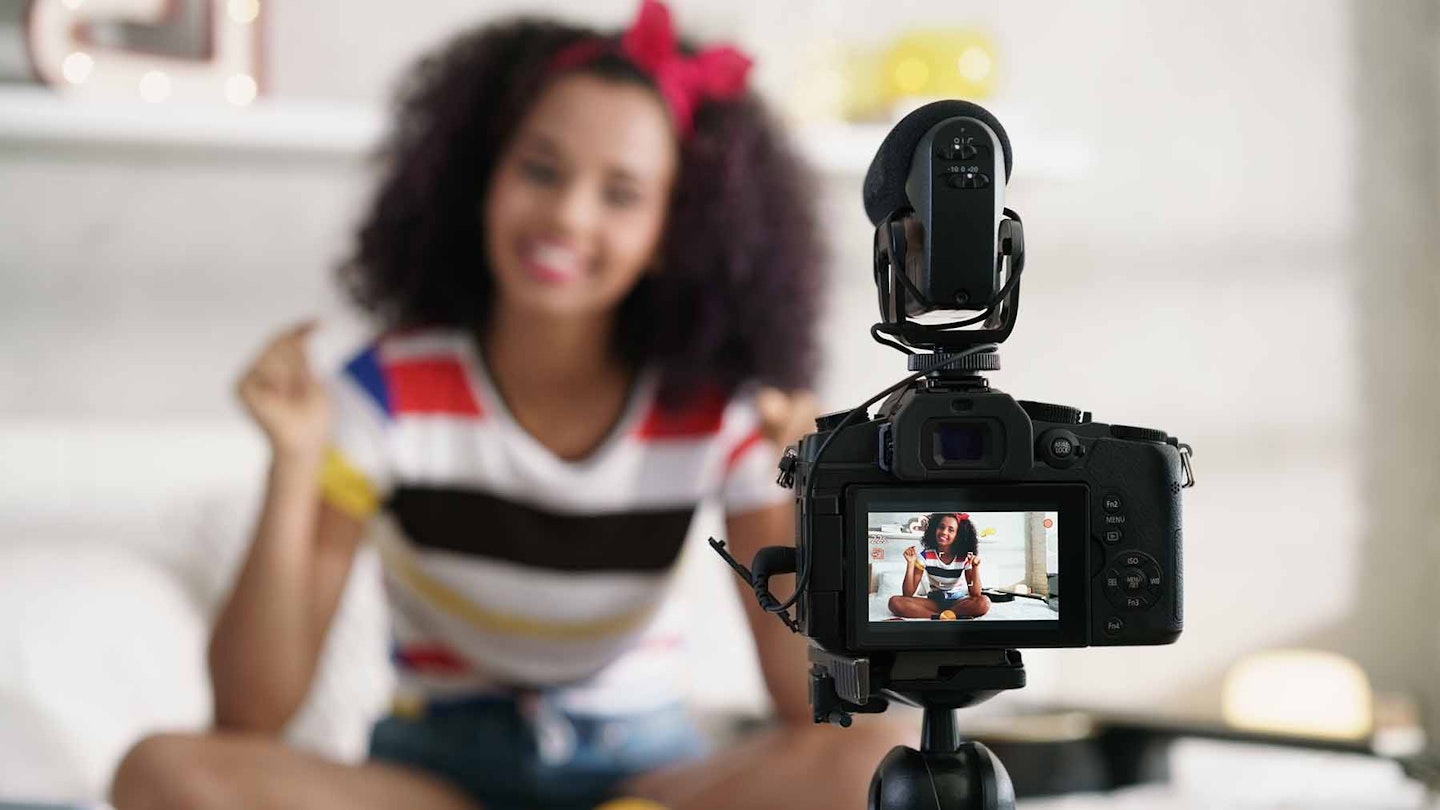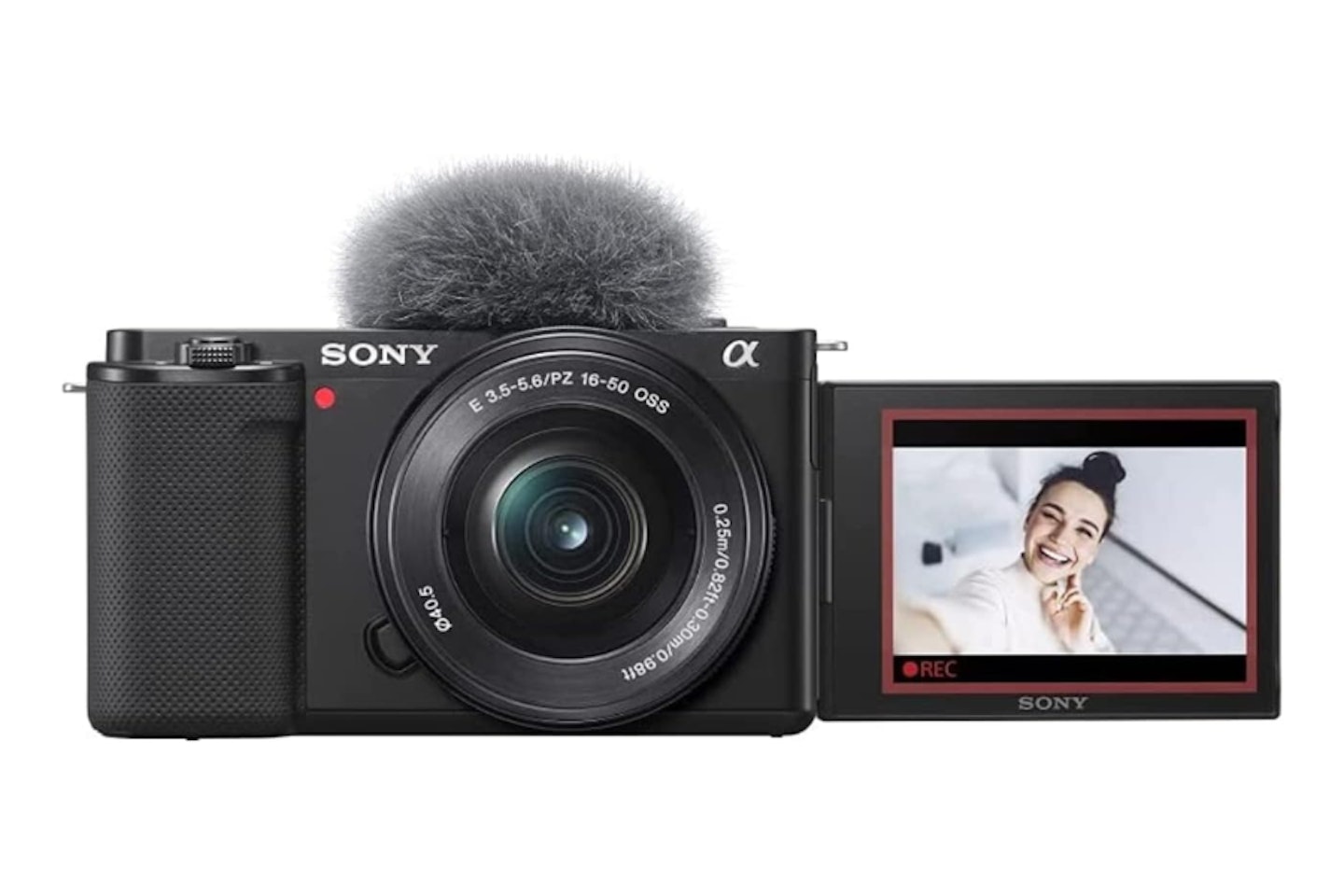Streaming giant YouTube has made the careers of many a successful content creator, and that's due in no small part to some of the best cameras too. Thanks to increasingly affordable camera gear, people can now create the kind of content they want to see. And you don't need a budget to match that of MrBeast or DanTDM either. Even low-budget video cameras are the perfect option for some creators. To coin and adapt a phrase: The best camera for YouTube vlogging is the one you have with you. But, why not make sure that the one you have is a bit better than your iPhone?
Before you do splash out on an expensive rig used by your favourite YouTuber, there are a few things you’ll need to consider. If you're a live streamer, you might consider a camera with that capability built-in, plus a mic for streaming; that way you can stream on the go without a whole computer or laptop to lug around. Live or not, you'll still need a camera with good automatic settings for exposure and focus. You'll want to be in front of the camera and trust the camera to sort the rest.
Best camera for YouTube vlogging in 2024 at a glance:
However, it's not all about the lenses - microphone options are important too. Cleaner audio in general will tell your viewers that you've invested in some good kit, particularly when filming outside. If you can afford it, your camera should have an external mic input. If not, buy a budget microphone that can connect to your phone for recording audio separately. So, all that said, which YouTube vlogging camera is right for you? That's where we come in.
Our expert picks below are great for any budding YouTuber, or creators looking to upgrade. We’ve got popular go-to options like the Canon G7X, a GoPro for thrill seekers, and even a great gimbal option for ultra-smooth footage. So, get ready to say "like, subscribe and hit that notification bell" - you're about to get inspired with the best camera for YouTube vlogging this year.
Best camera for YouTube vlogging in 2024
Best overall camera for YouTube vlogging
Canon's mid-range premium compact boasts a 1-inch sensor and tips the scales at a very manageable 319g. While the 20.1MP resolution and 24-100mm f/1.8-2.8 35mm equivalent lens are great for taking photos of your travels, it also boasts the ability to capture Full HD 1080p video. It's not groundbreaking, but at the price, it's a worthy mention for those taking their tentative first steps into the world of vlogging.
You'll find a front-facing flip-up touchscreen, image stabilisation and Face Detection AF system. It only achieves 60fps in Full HD, though this still equates to 2x slow motion, and the inclusion of in-built physical ND filters allows you to cut down on accessories while still capturing scenes in brighter conditions. It won't top any lists for the ultimate companion, but for a starter kit with an incredibly compact design and ease of use, it's worth checking out.
Pros
- Aimed at bloggers and content creators
- Flip screen
- 1-inch sensor
- 5-axis Image stabilization
- 4.2x optical zoom
- Autofocus
- WiFi
Cons
- Not 4K
- No high framerates for slow-motion
- No external mic input
| Video resolution: | 1920 x 1080, 25, 50, 24, 30, 60 fps |
| Photo resolution: | 20.1 megapixel CMOS sensor |
| Storage: | SD card |
| Connections: | WiFi |
| Mic input: | None, internal mic only |
| Weight: | 319 g |
| Dimensions: | 10.5 x 4.2 x 6.1 centimetres |
| Extra features: | Full creative control using Manual Movie mode, tiltable screen, 4.2x optical zoom, 5-axis image stabiliser |
- Customer review: "I use a DSLR for shooting videos on YouTube but needed a pocket-sized point and shoot with depth of field for longer trips where I wanted to be more lightweight. This suits me fine. Very happy with it."
Best budget camera for YouTube vlogging
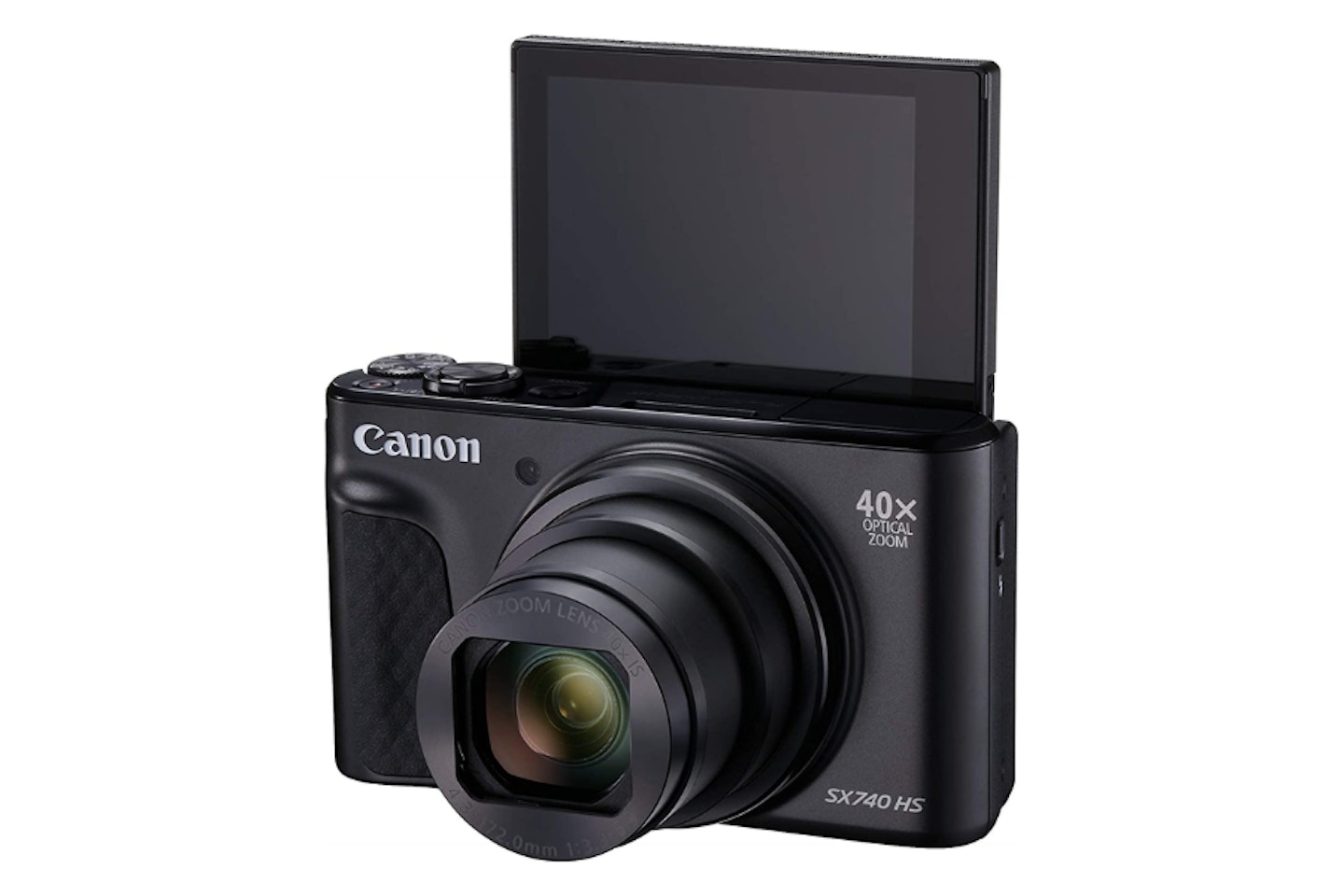
www.argos.co.uk
Canon is featured again in our list, as the SX740 HS PowerShot is almost too good for the price. It's not the cheapest low-budget option but that's to ensure reliability, image quality and decent sound. Most importantly, this Canon can actually shoot 4K resolution videos - as mentioned earlier, this isn't, and shouldn't be, for everyone. But if you do want 4K, this is an amazing deal.
You're getting a Canon lens - and a 40x optical zoom that will ease and enhance your shooting creativity. You get the obligatory flip-out screen too. One welcome addition is the WiFi support and Cannon Connect App for easy file transfers. Image stabilisation and continuous autofocus are there too, but we do wish it supported an external microphone. That said, anyone who wants better sound can always go for a cheap clip-on Lavalier microphoneand external audio recorder (your smartphone would do). All in all, a fantastic way to get into Canon cameras for video production.
Pros
- Great for video and photography
- Flip screen
- Image stabilization
- 40x optical zoom
- WiFi
Cons
- No high framerates for slow-motion shooting
- No external mic input so you'll need a separate mic and recorder
| Video resolution: | 4K 29.97/25 fps, 1920 x 1080, 59.94/50/29.97/25 fps |
| Photo resolution: | 20.3 megapixel CMOS sensor |
| Storage: | SD, SDHC, SDXC (UHS-1 Speed Class 3 compatible) |
| Connections: | WiFi, Bluetooth |
| Mic input: | None, internal mic only. |
| Weight: | 299 g |
| Dimensions: | 110.1 x 63.8 x 39.9 mm |
| Extra features: | 180-=degree tiltable screen, 40x optical zoom, Image stabiliser |
- Customer review: "Not bad at all for the price. Great for vlogging and taking videos/photos without all the fuss of a more expensive camera. Especially if you're not a photographer like me. Just don't expect it to be as good as cameras 3 times the price. The zoom is pretty incredible"
Best compact camera for YouTube vlogging
 Amazon
AmazonWhen we reviewed the GoPro Hero 9 we found this action cam to be both versatile and cutting-edge, thanks to its gargantuan 5K resolution. Waterproof to 10m, it has a 12MP camera that shoots video at Full HD - it can even stretch to 4K video at 60fps. Super-slow-motion mode will capture your adventures at 240fps too. It comes with a wide-angle lens, a mount for adding accessories, and HyperSmooth 3.0 Video Stabilisation for subscriber-pleasing results. One brilliant addition for bloggers here is the handy front-facing additional touchscreen - perfect for easy framing while shooting on your own. Plus it accepts voice commands for hands-free use. Streaming is even supported (although at a maximum of 1080p). Oh, and did we mention it can also stream to Facebook Live and YouTube? We have now. It's your perfectly portable YouTube pal.
Pros
- 5K at 60fps / 1080p at 120fps
- Waterproof
- Very good Electronic Image Stabilisation
- Front-facing display for easy framing
- Plenty of accessories and lens mods
- Streaming capability
- Large touchscreen
Cons
- Onboard mics are not great
- Picky with SD card specifications - choose an SD card with a good Class rating
| Video resolution: | 5K/60fps, 1080p/120fps / 23.6MP sensor |
| Photo resolution: | 20MP |
| Storage: | microSD |
| Connections: | Bluetooth, wireless |
| Mic input: | None, internal mic only. External via case accessory |
| Weight: | 450 g |
| Dimensions: | 34 x 51 x 62 millimetres |
| Extra features: | Waterproof, Hypersmooth video stabilisation, 8x Slo-Mo feature, Hindsight - records the previous 30 seconds from the moment you pressed the rec button |
- Customer review: "What a fabulous camera! This is my first ever Gopro, and I can't imagine how I lasted so long without getting one. The image quality is stunning. The stabilization is borderline miraculous - I bought an expensive gimbal because I didn't trust the idea of digital stabilization, but I rarely use it as the Gopro does such a great job. The sound quality is far better than expected, but I'd still use an external mic if I were you."
"The touch screen is great, and the menus are straightforward and user-friendly. With Pro-tune turned on, it is possible to set the camera up with all the settings a professional would require, but with it turned off you can let Gopro control everything and it does a surprisingly decent job. This camera is equally suitable for amateurs who just want to capture their fun holiday moments, or for professional filmmakers who have exacting standards and desire perfection. For action filming, there is still no camera to beat this. And for the price, you can't go wrong!."
Best 4K camera for YouTube vlogging
Sony's Alpha ZV-E10L is a fully-loaded compact camera that Sony has aimed squarely at video bloggers and YouTubers. An equally capable stills camera, Sony has packed this with optical know-how, including its own interchangeable lens system for maximum choice for creators. Right now, there are over 60 different lenses available.
You'll also be able to relax into your presentations to-camera, thanks to lightning-fast autofocus. The ZV-E10L has a premium feel, and it even contends with some DSLRs. The Alpha ZV-E10L isn't priced for beginners on a budget though - but if you can stretch to it, your YouTube channel is going to have a seriously professional edge to it.
Pros
- Excellent 24MP resolution
- APS-C sensor
- Compact body
- Plenty of lens options
- A real star performer when it comes to video
Cons
- Battery life is medium, buy a spare
- Video streamers will need to look elsewhere
| Photo resolution: | 24MP |
| Lens: | 16-50 mm |
| Storage: | SD/SDHC/SDXC + Memory Stick Pro Duo |
| Sensor: | APS-C (23.5 x 15.6 mm) CMOS |
| Video resolution: | 4K (up to 30p) and Full HD slow motion (up to 120P) |
| Weight: | 343 g |
| Dimensions: | 115 x 64 x 45 mm |
| Extra features: | Supports over 60 compatible lenses, Real-time Eye AF, High-quality mic |
- Customer review: "I decided to upgrade from my normal camera phone to this. I chose this camera because you have the option to change the lenses. The video quality cannot be compared to a camera on your phone, especially in low light. Takes good photos too. I'm still learning all the settings and am probably using about 10% of what it can do. Looking forward to developing my skills."
Best stabilised camera for YouTube vlogging
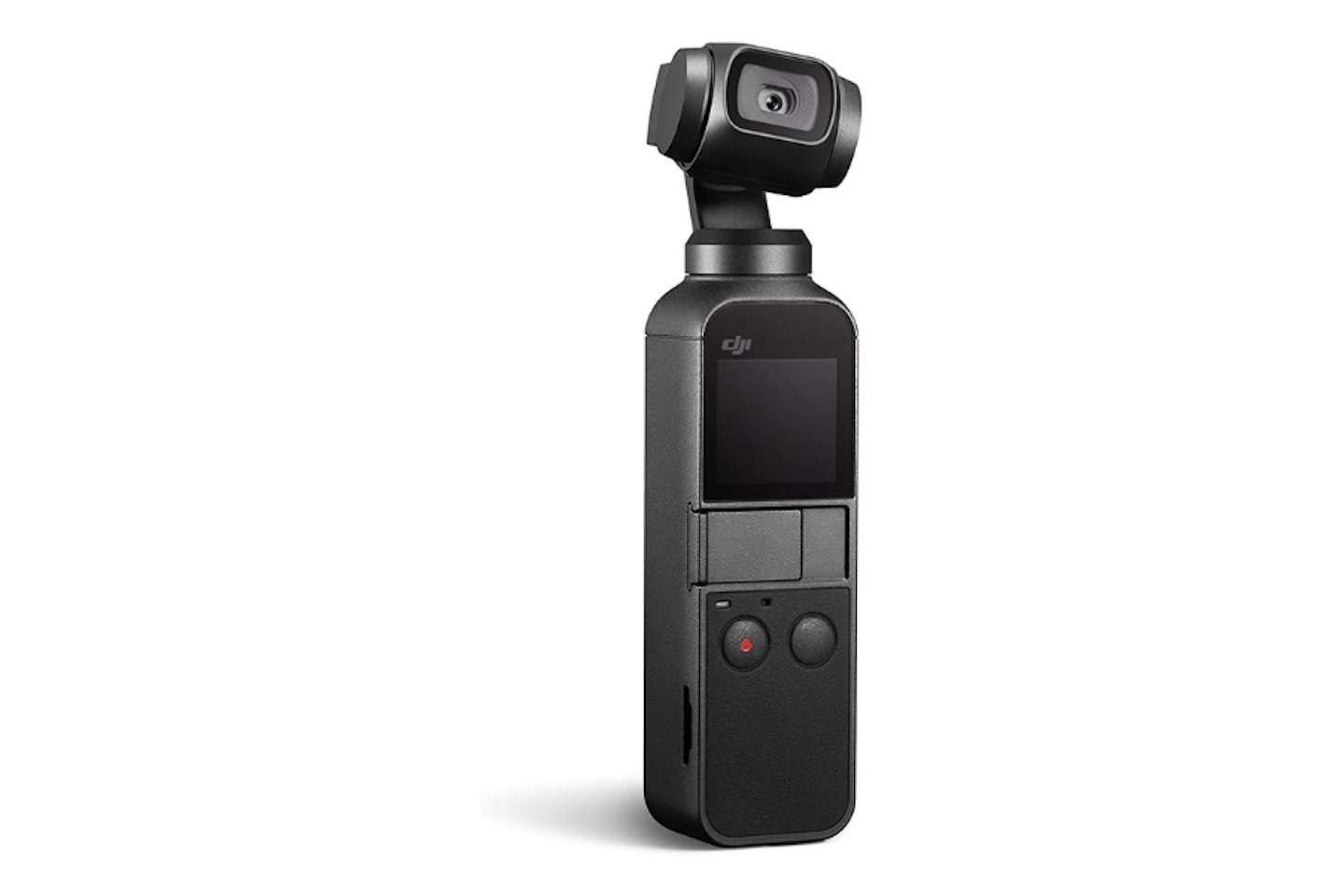
DJI is well-known for its stabilisation technologies - namely the action camera/gimbal hybrid. The DJI Osmo Pocket is a prime example - mustering up 4K video at 60fps. The slim profile means it can slide right into your pocket, while the 3-axis mortised gimbal delivers incredibly smooth footage. Helpful options for YouTubers include following and selfie modes and hyper lapses. The one-inch rear touchscreen is easy enough to reach, or you can attach your phone via an app and take advantage of a larger screen. That's a great perk for anyone shooting while out and about. DJI even provide a fully-featured editing app for quick and easy editing. A real all-in-one solution for any active vlogger.
Pros
- Motorised gimbal
- 4K at 60fps
- The free (good) phone app and editing app
- Super-portable
Cons
- Internal mics are good, but to connect an external mic you'll need a handle accessory
| Video resolution: | 4K/60fps / 1080p/120fps |
| Photo resolution: | 12MP |
| Storage: | microSD |
| Connections: | Wired only (Bluetooth and WiFi available as a separate accessory) |
| Mic input: | None, 4 internal mics |
| Weight: | 116 g |
| Dimensions: | 3.69 x 2.86 x 12.1 cm |
| Extra features: | Editing app, Face Tracking, MotionLapse for timelapse shoots, Nightshot gain |
- Customer review: "You will be constantly amazed at what this tiny package is able to achieve with both Stills and Video. The size is the main thing, having owned the OSMO Mobile 2 and a similar 3-axis gimbal that relies on using a smartphone camera/GoPro the convenience and size fact for the OSMO Pocket are second to none. The setup time is 5 secs. This is 4 or 6 times quicker than a Smart Phone Gimbal."
"Image quality is also better than even the best Smartphone Cameras especially as you have the ability to shoot manual and with D-Cine profiles in Video. Add RAW stills and a fantastic Partner App DJI Mimo and this thing resorts ALL Smartphone Gimbals to the bin, simple as that."
Best camera for YouTube vlogging in 2024: Buyer's guide
Every vlogging camera has its specific strengths and weaknesses. So, to find the one that's best for you, let's press pause for a moment and consider your vlogging needs.
Where are you recording?
If you’re looking to vlog from home or an indoor studio, your camera choice may be different from someone capturing their trek up the mountainside. If you’re planning on any outdoor filming, keep a little budget aside for weather protection, a decent camera bag, and extra batteries.
If indoors, you don't want to have to rely on your existing indoor lighting. Not only is the colour temperature of indoor lights often awful for video, your camera may even register their flicker. Sometimes, the only other way to overcome that dreaded low-light grain is with portable LED lights. They're lightweight and can transform your shoots, with small LED ring lights for video blogging and larger LED light panels for larger scenes.
Are you wearing or holding your camera?
If you’re capturing your day out hang-gliding, rock-climbing or skiing, then you need a small and light camera with quick autofocus and high frame rates. Therefore, GoPro cameras are an instant go-to option here, as they can be worn and mounted on a range of sporting equipment. If you're not an adrenaline junkie, you might just need image stabilisation (in-built or via a gimbal) to smooth out your shots as you walk and talk. This will ensure that your movements are silky smooth.
Are you recording yourself?
If so, try to pick a video camera with a flip-out tiltable screen. You can then glance at the camera to make sure you’re in frame or in focus without having to move. If you’re recording while walking around, image stabilisation (either built-in or via a gimbal mount) will give you smooth footage. If holding a camera at arms-length sounds a little too tiring, grab a good old-fashioned tripod or comfortable hand-held mount to take some of the strain.
Don't forget the sound
These days, you'll probably be fine with your camera's internal microphone - they've become much better at filtering unwanted background noise in recent years. However, they're not perfect, and wind noise can really ruin your content. Therefore, for faultless higher-quality audio, you'll probably want to invest in an external mic. These can be wired or Bluetooth. Some are clip-on lapel mics, others are mounted to the camera or a tripod, such as the RØDE Auxiliary VideoMic GO.
Many cameras will support Bluetooth connections, others will have a standard 3.5mm mic jack input on the camera itself. As a workaround, a microphone with a 3.5mm jack can be connected to a mobile phone for recording good sound. You can then dub that onto your video footage in post-production.
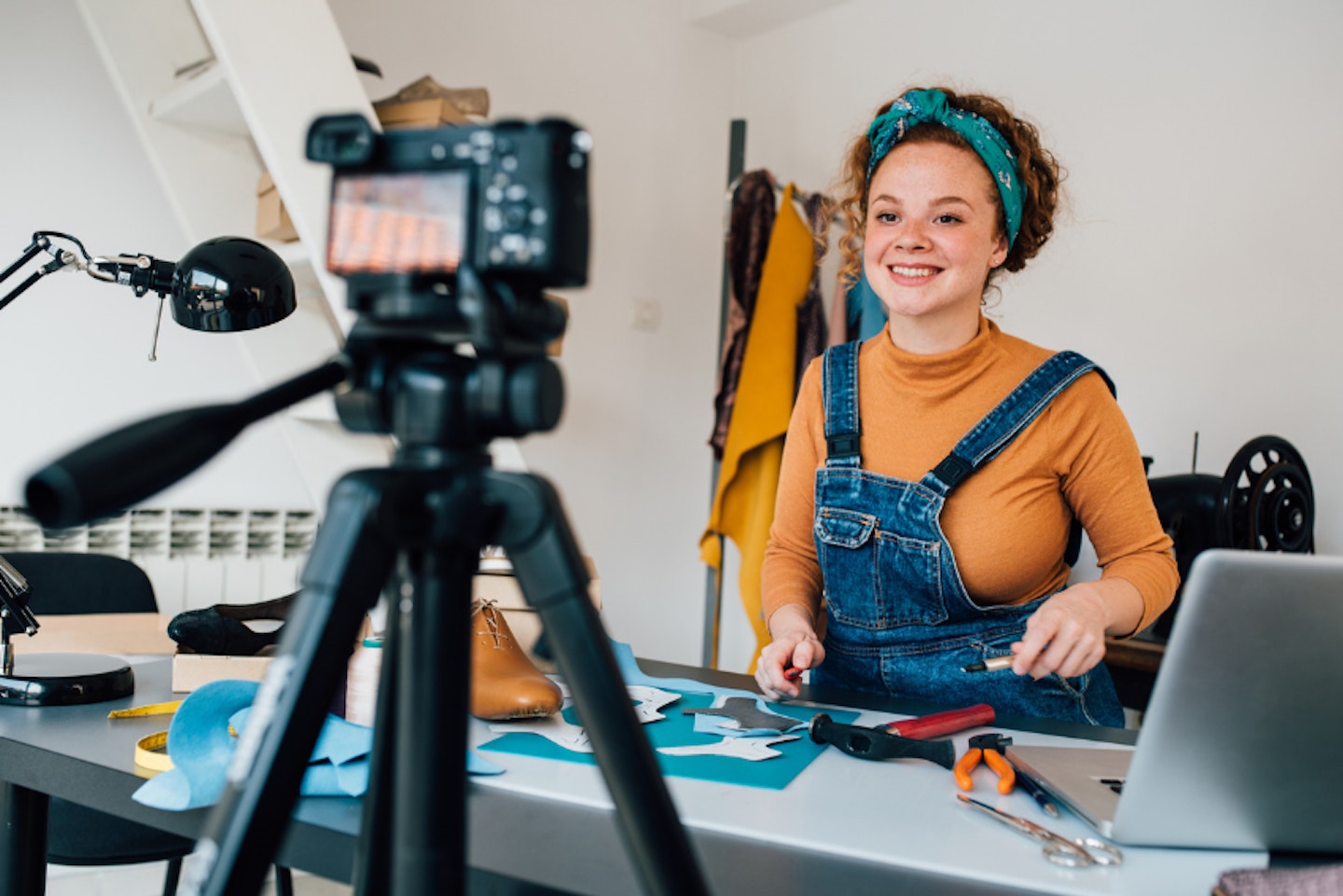
Best camera for YouTube vlogging in 2024: FAQs
What vlogging camera do YouTubers use?
Every YouTuber has different needs, and the most successful probably use half a dozen different cameras depending on what they're shooting. As always, it's best to think of cameras as a creative tool to help you get the results you want when you create your video content. No camera, no matter how much you spend, is the key to YouTube success - that would be you and your ideas.
What YouTube vlogging camera is best for 4K?
We think the Sony Alpha ZV-E10L above is a brilliant all-rounder for everything, from 4K resolution to sound recording. Although, it is worth mentioning that, as impressive as 4K is, many creators don't need to shoot in 4K. Not all content will need that level of detail, so consider why you need it before you stump up the cash. It's also not guaranteed that you'll be able to edit 4K footage, as you'll need a decent computer - or one of the best laptops for video editing - and software to deal with the larger file sizes.
What's the best beginner vlogging camera?
As touched on above, anyone making videos for YouTube will usually need to edit them - and not all cameras record in the same file format. Beginners should probably steer clear of 4K for the time being. That's good news because most Full HD cameras are a lot cheaper. We recommend the Canon SX740 HS PowerShot, it's our pick for the best budget vlogging camera.
Do I need a tripod?
No vlogger camera kit is complete without one; whether that's a flexible table-top version like a Joby GorillaPod or a full-sized fluid-head tripod like the Victiv T72. Even in-camera image stabilisation or a gimbal isn't foolproof, and if you're doing a lot of presenting to camera you probably should consider a tripod. You can get creative with small tabletop tripods too, placing the camera into tight corners and framing things up nicely. Recording yourself without worrying about propping your expensive equipment up on a pile of books is both wise and great for shot quality.

Best camera for YouTube vlogging in 2024: Jargon buster
Frame rate
Frame rate, normally measured in FPS (Frames Per Second) is key when considering any camera. It's the number of images the camera captures per second. The higher the frame rate you can afford the better - especially as higher frame rates can be slowed down for slow-motion effects. Common frame rates are 50fps, 60fps, and 120fps.
Resolution
Resolution is the number of pixels that make up each video frame of your video. Expressed as width x height, the most common resolution you'll find in high-end cameras for YouTube vlogging is 4K. That's 3840 x 4320 pixels. If you'd like to know more, check our expert guide to resolutions.
Image stabilisation (OIS / EIS)
There are two main types of stabilisation: OIS (Optical Image Stabilisation), and EIS (Electronic Image Stabilisation). With electronic stabilization, the device analyses the video for shakey movement and adjusts it in-camera. However, to achieve this the image is always cropped at the edges as part of generating the stability. OIS is better and normally found in high-end cameras due to the engineering involved. These cameras have internal gimbals to keep the internal lens balanced.
Chris Duffill is a Tech Product Writer for What's The Best. He specialises in audiovisual, computing, and gadgets. He also writes for Yours.
Subscribe to the What's The Best Newsletter to keep up to date with more of the latest reviews and recommendations from the rest of the What’s The Best team.
